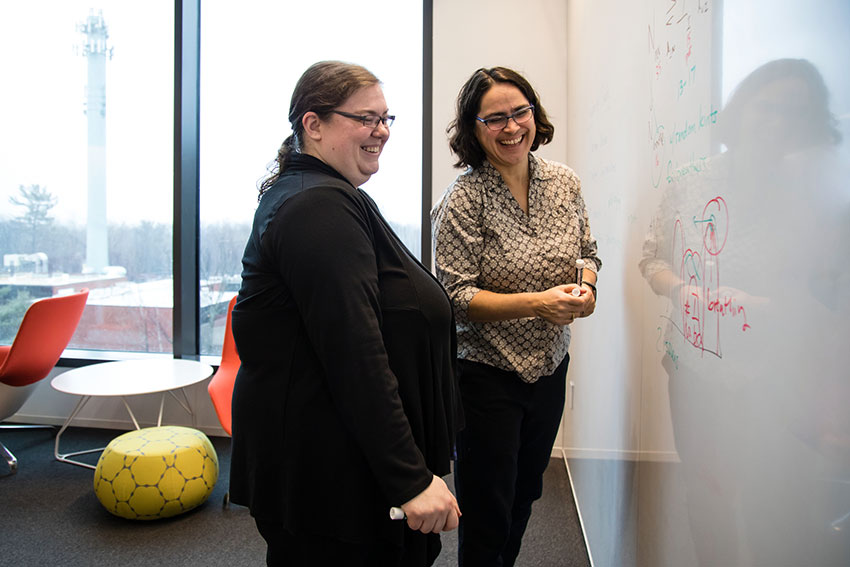Even professors may need help with their math.
Students familiar with Amherst’s mathematics and statistics department know that there are teaching assistants, including the student Statistics and Data Science Fellows, who help out in classes and consult at the Moss Quantitative Center.
This happens on the faculty level as well. Professors who specialize in understanding how statistics work routinely spend time with colleagues in other departments whose research requires wrangling numbers, but who may not be well-versed in analyzing them for patterns.
A stats faculty member might help a colleague with an analysis for a particular paper, says Amy S. Wagaman, associate professor of statistics. Or the help could come later in the process when a peer-reviewed paper has come back for revisions.
“In the past, I've helped [colleagues in] biology, neuroscience, geology, anthropology, chemistry, computer science. We’ve talked to other folks in math. We’ve had questions from people in political science and psychology,” she says.
Lending her expertise to so many different disciplines doesn’t feel like a stretch to Wagaman, who, as an undergraduate at Kenyon College, majored in not only math but also anthropology.
“I actually found out that I liked statistics because I saw it being used in anthropology,” she says.
Wagaman currently meets weekly with Associate Professor of Chemistry Sheila Jaswal, a collaboration that dates back to 2011, when the two were new to the College.

For her research in protein folding, Jaswal has to do computational simulations to better analyze her lab’s data. This can involve uncovering trends in the data using statistical methods she doesn’t have experience with, she says.
“It saves time, and we are doing more interesting work than I would be doing on my own because two heads are not just better than one—they’re actually like three,” Jaswal says.
“When I started my collaboration with Sheila,” Wagaman adds, “I had to spend a whole summer learning chemistry. It took the whole summer for me to finally realize that when Sheila said ‘residue’ she meant ‘amino acid.’”
“Amy’s a statistics evangelist or a statistics ninja,” Jaswal says. “It doesn’t matter if it’s protein chemistry or evolutionary biology.”
Carrie Palmquist, assistant professor of psychology, has worked with Nicholas Horton, Beitzel Professor of Technology and Society and professor of statistics, to come up with a better model for presenting her research data on how children evaluate adults as trustworthy. And for her research on how local politics in China molds policy on the national level, Assistant Professor of Political Science Kerry Ratigan has worked with Horton on problematic data for a journal paper.
“I can do Googling, and I can read the research, but it might take me hours or days, and then I might still not feel completely confident in my answer,” Ratigan says. “But if I talk to someone who really knows the field, if Nick can give me a thumbs up or a thumbs-down on that, then I can feel more confident in the next steps.”
It’s satisfying for the statisticians, too. “You get to play in other people's sandboxes, which is really fun,” says Wagaman. “I get to learn a little bit of context about the different fields or the different topics, and that's really enjoyable.”
